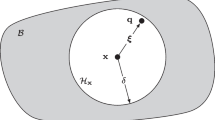Abstract
This paper analyses the performance of several versions of a block parallel algorithm in order to apply Neville elimination in a distributed memory parallel computer. Neville elimination is a procedure to transform a square matrix A into an upper triangular one. This analysis must take into account the algorithm behaviour as far as execution time, efficiency and scalability are concerned. Special attention has been paid to the study of the scalability of the algorithms trying to establish the relationship existing between the size of the block and the performance obtained in this metric. It is important to emphasize the high efficiency achieved in the studied cases and that the experimental results confirm the theoretical approximation. Therefore, we have obtained a high predicting ability tool of analysis. Finally, we will present the elimination of Neville as an efficient tool in detecting point sources in cosmic microwave background maps.
Similar content being viewed by others
References
Alonso P., Cortina R., Díaz I., Ranilla J.: Analyzing scalability of Neville elimination. J. Math. Chem. 40(1), 49 (2006)
Alonso P., Cortina R., Díaz I., Ranilla J.: Scalability of Neville elimination using checkerboard partitioning. Int. J. Comput. Math. 85(3–4), 309 (2008)
Alonso P., Cortina R., Díaz I., Ranilla J.: Blocking Neville elimination algorithm for exploiting cache memories. Appl. Math. Comput. 209, 2 (2009)
Ando T.: Totally positive matrices. Linear Algebra Appl. 90, 165 (1987)
Gasca M., Michelli C.A.: Total Positivity and its Applications. Kluwer, Dordrecht (1996)
Gasca M., Peña J.M.: Total positivity and Neville elimination. Linear Algebra Appl. 165, 25 (1992)
Gemignani L.: Neville elimination for rank-structured matrices. Linear Algebra Appl. 428(4), 978 (2008)
Grama A., Gupta A., Karypis G., Kumar V.: Introduction to Parallel Computing. Pearson Education Limited, London (2003)
Lin H., Bao H., Wang G.: Totally positive bases and progressive iteration approximation. Comput. Math. Appl. 50, 575 (2005)
Lopez-Caniego M. et al.: Comparison of filters for the detection of point sources in Planck simulations. Mon. Not. Roy. Astron. Soc. 370, 2047 (2006)
Peña J.M.: Shape Preserving Representations in Computer Aided–Geometric Design. Nova Science Publishers, New York (1999)
Penzias A.A., Wilson R.W.: A measurement of excess antenna temperature at 4080 Mc/s. Astrophys. J. 142, 419 (1965)
Prieto M., Montero R.S., Llorente I.M., Tirado F.: A parallel multigrid solver for viscous flows on anisotropic structured grids. Parallel Comput. 29, 907 (2003)
Smoot G. et al.: Structure in the COBE differential microwave radiometer first-year maps. Astrophys. J. 396, L1 (1992)
Spergel D.N. et al.: First-year Wilkinson microwave anisotropy probe (WMAP) observations: determination of cosmological parameters. Astrophys. J. Suppl. 148, 175 (2003)
J.A. Tauber, The Planck mission, in New Cosmological Data and the Values of the Fundamental Parameters. Proceedings of IAU Symposium vol. 201 (2005), p. 86, eds. by A. Lasenby, A. Wilkinson
Toffolatti L. et al.: Extragalactic source counts and contributions to the anisotropies of the cosmic microwave background: predictions for the Planck Surveyor mission. Mon. Not. Roy. Astron. Soc. 297, 117 (1998)
Author information
Authors and Affiliations
Corresponding author
Additional information
This is one of several papers published in Journal of Mathematical Chemistry, Special Issue: CMMSE 2010, with invited editorial contribution by Prof. Jesus Vigo-Aguiar.
Rights and permissions
About this article
Cite this article
Alonso, P., Cortina, R., Ranilla, J. et al. An efficient and scalable block parallel algorithm of Neville elimination as a tool for the CMB maps problem. J Math Chem 50, 345–358 (2012). https://doi.org/10.1007/s10910-010-9769-0
Received:
Accepted:
Published:
Issue Date:
DOI: https://doi.org/10.1007/s10910-010-9769-0



